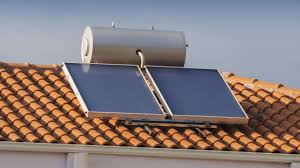Heating and air is something that is worth becoming better acquainted with even if you do not work in this industry because it affects everyone of us in our day-to-day lives. Often these are topics that we do not give a great deal of thought to until we are faced with a problem with our heating system in our home or our workplace. The same can be said for our cooling system. Let us look now at what heating and air is all about.
If you have ever seen the letters HVAC together then you need to know that this is the acronym for Heating, Ventilation and Air Conditioning. HVAC comprises the mechanical systems that provide heat, ventilation and cooling in houses, office buildings, apartment buildings, hospitals, shopping malls and industrial buildings. In fact HVAC systems are in every building you visit or go into on a regular basis!
Ventilation and Air Conditioning. HVAC comprises the mechanical systems that provide heat, ventilation and cooling in houses, office buildings, apartment buildings, hospitals, shopping malls and industrial buildings. In fact HVAC systems are in every building you visit or go into on a regular basis!
The heating and air systems in buildings can play a role in your comfort level as you go about your day and night. It can affect your ability to work and to sleep. The heating system in a building is made up of mechanical equipment which is an element of the larger whole, which is to say the hot water heating system. It is also sometimes referred to as the hydronic heating system. Those who are more sophisticated in their knowledge of heating systems can use the information they learn to help with basic heating system tests and troubleshooting.
Not all heating systems are made the exact same although many do have similar components. The same can be said for heating and air conditioning. However these systems generally do have parts that are easy to recognize from one system to another.
Some of the most common types of heating systems include hot water boilers, heating circuit, heating water pumps, excess pressure control loops, heating water expansion tanks, makeup water systems and water chemical treatment. Other common systems include a heat exchanger, heating terminal units, convector radiation, convector radiation temperature control loop, fan coil units, ceiling and cabinet unit heaters, glycol circuit, glycol pumps, charging tank, expansion tank. These systems often contain steam boilers which are composed of feed water chemical treatments and condensate return.
A building air system is what is responsible for making sure that there is proper air flow and ventilation in a building. These types of systems often work in unison to supply air conditioning, central heating and ventilation. There is more than one kind of system and each operates in a different manner and needs to satisfy different kinds of mechanical needs. Examples of the different types include terminal reheat constant air volume, single duct variable air volume, single duct constant air volume, multizone constant air volume, and dual duct constant air volume. Other types of systems include single duct constant dump bypass, perimeter induction, outside makeup air system, building automation system and garbage carbon monoxide system.


